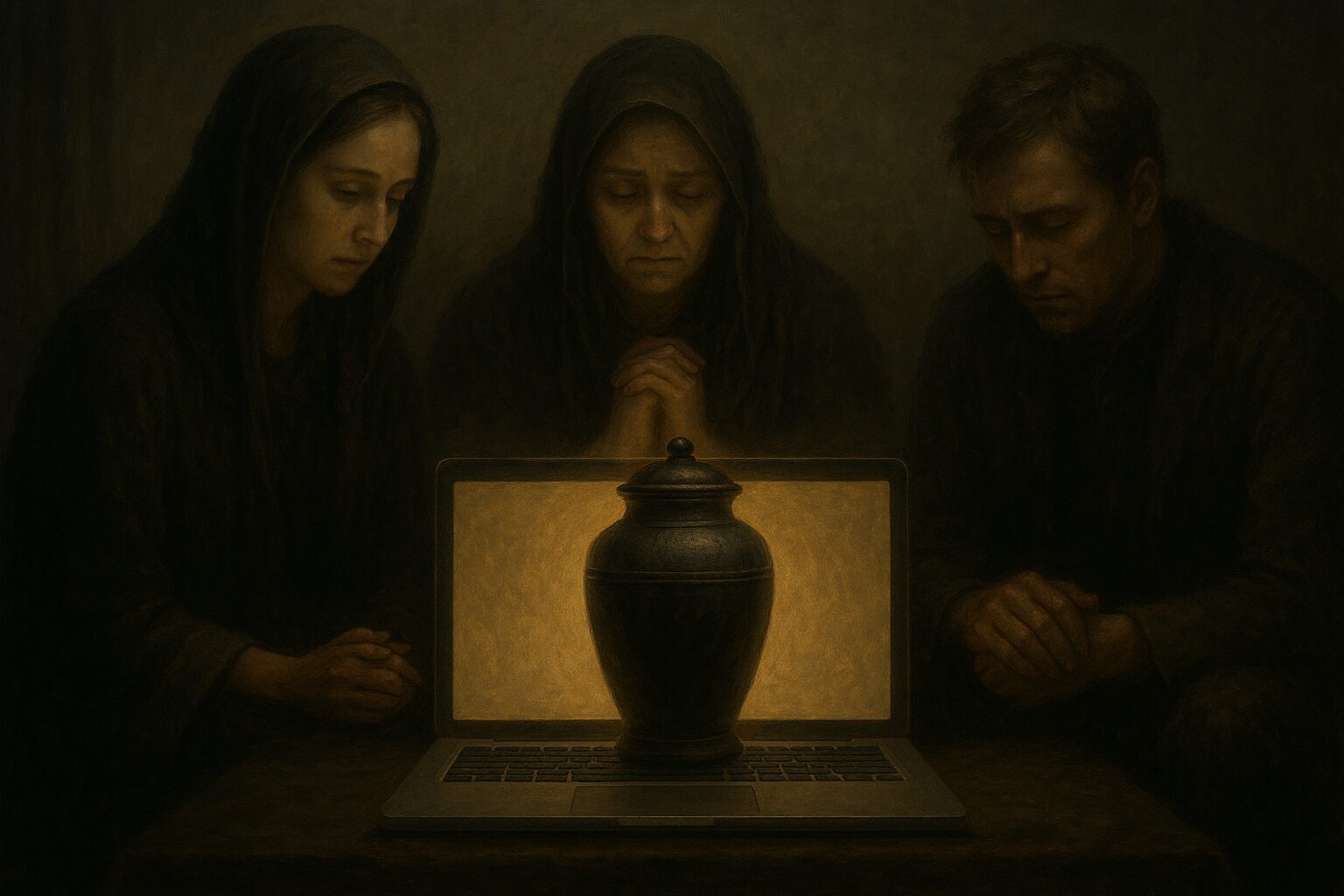“In the old world, we buried the dead. Now, we archive them.”
We once laid the dead to rest with soil, stone, and silence. Today, their digital echoes linger—on clouds, in messages, in cached fragments of our online lives.
Welcome to the age of data-driven mourning, where death doesn’t mean disappearance. Instead, the departed remain—as pings, pop-ups, autoplayed memories, and unread notifications.
The Ghosts in the Machine
You may not visit a grave, but:
- Your grandmother’s voice plays on loop in a forgotten WhatsApp note.
- Your ex’s messages are fossilized, untouched, in your iCloud backup.
- Your friend’s meme folder survives them—buried in a Google Drive too sacred (or terrifying) to open.
This isn’t mere nostalgia. It’s a new kind of haunting—one made of code, cloud storage, and the impossibility of true deletion.
The Rise of Digital Rites
As our grief evolves, so too do our rituals. In the face of immortal data, we’ve begun to invent sacred practices for a disembodied era. These include:
🔹 Virtual Memorials
- Minecraft funerals, where avatars gather in pixelated cemeteries.
- Zoom wakes, where mourners share stories across continents in real time.
🔹 Time-Shifted Farewells
- Encrypted time capsules, emailed a decade after death.
- Scheduled messages, where the dead “check in” with the living years later.
🔹 Data Burnings
Some choose to honor the dead by deleting them:
“We held a digital funeral. We lit candles and deleted her Instagram account together. It was the only way to let go.”
A new ritual of cleansing—where deletion becomes sacrament.
🔹 AI and the Afterlife
Others resist letting go. Using old conversations and posts, they:
- Build chatbots that mimic the deceased, continuing the dialogue.
- Train AI personalities to “live on,” responding with familiar tone and style.
- Create curated digital legacies: playlists, filters, and scheduled posts—haunting their own followers with aesthetic consistency.
Between Reverence and Refusal
“Are we honoring the dead, or just refusing to let them log off?”
This is the central question of our age. In a world where deletion feels like blasphemy, letting go becomes both harder and more loaded. The finality of death clashes with the infinite lifespan of digital memory.
Resurrection, Reimagined
Perhaps, in this brave new world of endless echoes, remembering has become a form of resurrection.
- Not physical.
- Not religious.
- But data-driven. Algorithmic. Eternal.
Conclusion: Sacred Storage
As we move forward, we must ask ourselves:
- What does it mean to die in the cloud?
- How do we truly mourn in an age where no file is ever fully erased?
- Is grief now a form of curation, a login, a user agreement with the past?
The dead do not disappear—they update, they sync, they linger.
And perhaps that’s the most human thing of all.
In the old world, we buried the dead. Now, we archive them.
Your grandmother’s voice is preserved in a WhatsApp note. Your ex’s texts are fossilized in your iCloud. Your late friend’s meme folder outlives them on a shared Google Drive you’re too scared to open. Welcome to the new necromancy: grief in the age of eternal data.
This article explores how mourning has shifted in a world where nothing truly disappears. Instead of fading into memory, the dead linger as algorithms, avatars, cached images, and autoplayed memories. They ping. They remind. They remain.
From digital funerals in Minecraft to encrypted time capsules emailed to loved ones ten years post-mortem, we’re inventing new sacred rites on the fly. Some people now host “data burnings,” where they delete a loved one’s entire online presence in a somber ritual. Others create AI-powered chatbots from old messages, turning grief into dialogue. A few particularly brave souls even livestream their own digital afterlives, curating playlists and filters to haunt their followers with aesthetic consistency.
Are we honoring the dead, or just refusing to let them log off?
In a world where deletion feels like blasphemy, maybe remembering has become the new resurrection.
